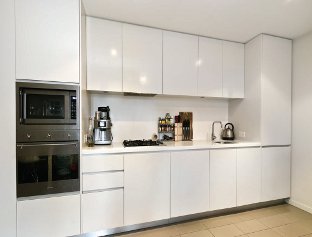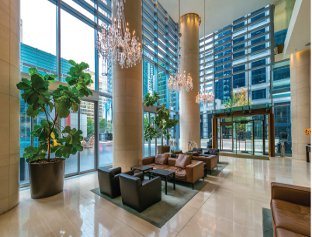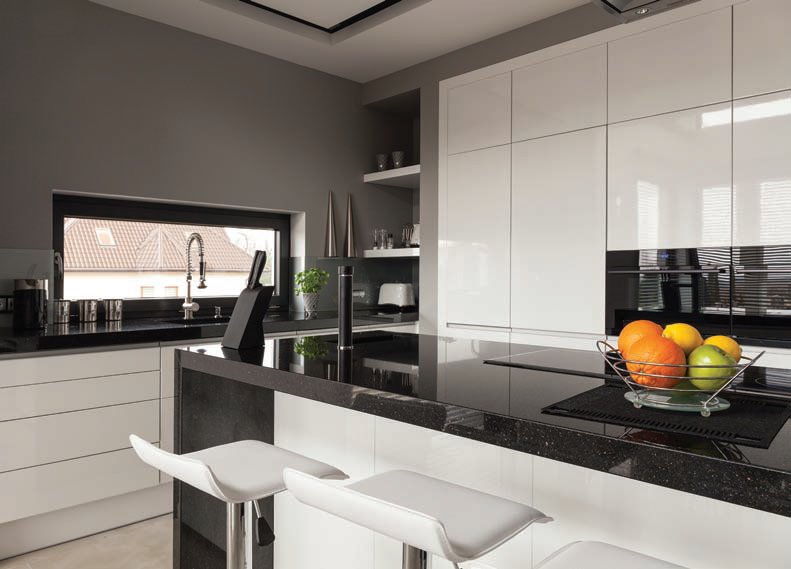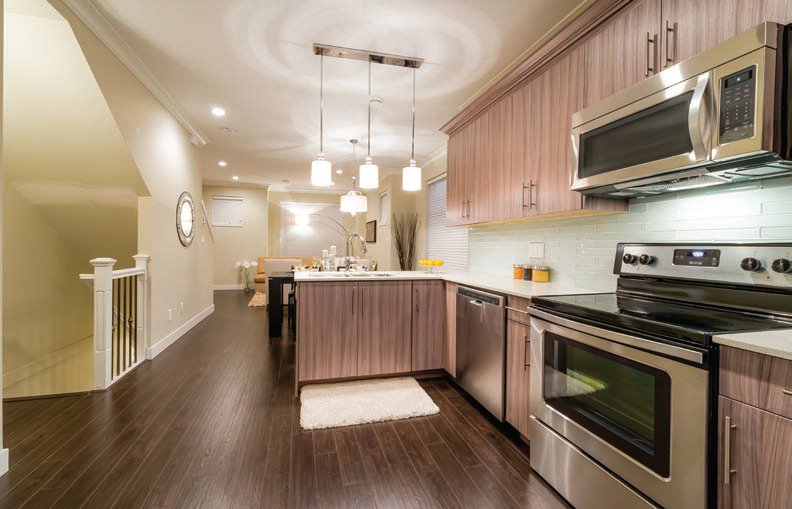The significant global rise of decorative laminates
15 July 2015World demand for decorative laminates will reach 10.7 billion m2 in 2018. These and other trends are presented in World Decorative Laminates, a new study from The Freedonia Group, a Cleveland-based industry market research company
Global demand for decorative laminates is expected to rise 5.6% per year to 10.7 billion m2 in 2018, valued at US$40.8bn. Demand will benefit from expected increases in the manufacture of products such as cabinets, ready-toassemble (RTA) furniture and flooring, which are often made from engineered wood and then laminated. Due to cost and performance benefits, gains will also be driven by increased market penetration at the expense of other surfacing materials, such as wood veneer and paint. Furniture and cabinets were the largest markets for decorative laminates in 2013, accounting for nearly 70% of total demand.
The Asia/Pacific region was the largest market for decorative laminates in 2013, with nearly 50% of the global total. Analyst Pam Safarek notes that "the region benefits from its leading position in engineered wood production, particularly particleboard and MDF, which are often given a laminate layer at the point of production."
Advances for laminates will be propelled by the continuing development of the large Chinese market, which alone accounted for 31% of global demand in 2013. China is the world's largest producer of RTA furniture and laminate flooring. Manufacturing capacity for laminated boards continues to expand in China.
India is expected to post the most rapid gains in laminate demand worldwide through 2018. The primary driver of demand is favourable economic activity, leading to substantial increases in building construction activity, average income levels and consumer spending, all of which provide opportunities for growth in the country's manufacturing base, including many engineered wood based products that use laminates as a surfacing material.
India is the second largest manufacturer of decorative laminates in the region, with 2013 output of 370 million m2. In particular, the country accounts for a sizeable proportion of global high-pressure laminate production. Nevertheless, the country remains a net importer, with a deficit equivalent to a quarter of demand in 2013.
Leading external sources of supply include China and various west European countries. In addition to catering to domestic demand, companies in India also supply decorative laminates to Indonesia, Malaysia, Taiwan, Thailand and other parts of the Asia/Pacific region, Canada and various countries in the Middle East.
Well-established decorative laminate industries are found in western Europe and the US, where engineered wood and paper industries are highly developed. Despite an ongoing shift in production of laminated engineered wood products to China, India and other developing areas, demand for laminates in western Europe is still significant, as the region maintains large RTA furniture and laminate flooring industries. Germany, France and Sweden are regional leaders in the production of RTA furniture. The US also maintains significant production capacity for RTA furniture, cabinets and laminate flooring.
In area terms, 69% of total decorative laminate demand in 2013 was dedicated to the cabinet and furniture markets. Of the two, the cabinet market is projected to post the more rapid gains through 2018. In developed countries, gains will be due primarily to a rebound in housing completions and improvement, as cabinets are included in most housing in developed countries and are one of the commonly replaced components during home remodelling. In developing countries, continued urbanisation will provide opportunities as housing is modernised. Additionally, more cabinets will feature engineered wood, such as particleboard and MDF, which are commonly covered with laminates. Decorative laminates will benefit from this trend, despite a large share of these boards being left unfinished (eg cabinet backs).
The wall panel market is forecast to post the fastest growth through 2018, benefiting from greater market penetration in both residential and non-residential buildings. Growth in demand for decorative laminates in the production of laminated wall panels will be promoted by interior designs favouring a sleek, modern look.
From a small base, laminated wall panels will find expanded use on building exteriors, further providing opportunities for associated decorative laminates. The flooring market will approximate global gains through 2018. Gains will benefit from increased market penetration of laminate flooring in developing areas at the expense of alternative materials such as ceramic tile and wood flooring. Limiting further growth is growing competition from luxury vinyl tile (LVT).
Other markets include a variety of products, such as store fixtures, counter tops and doors. Counter tops and doors will benefit from accelerating gains in building construction activity through 2018. Laminate counter tops and laminated doors find use in both residential and non-residential settings. Laminate counter tops face competition from higher value counter top materials, such as natural stone, engineered quartz and solid surface.
Decorative laminates are just one type of potential surfacing material for engineered wood doors. However, laminates such as vinyl films are gaining market share at the expense of paint and wood veneer. In store fixtures, laminates face competition both from other surfacing materials and fixtures made from solid wood, plastics and metal.



